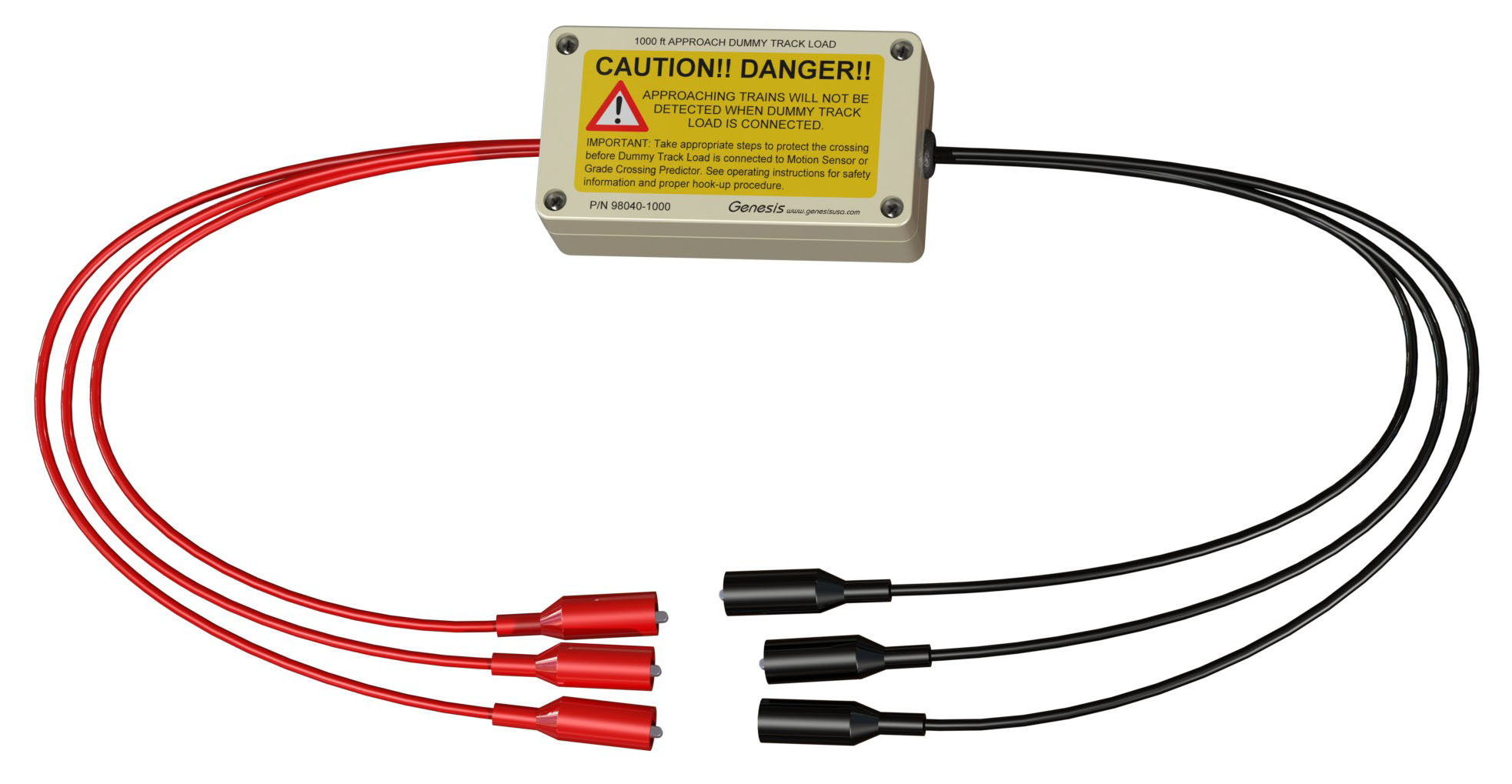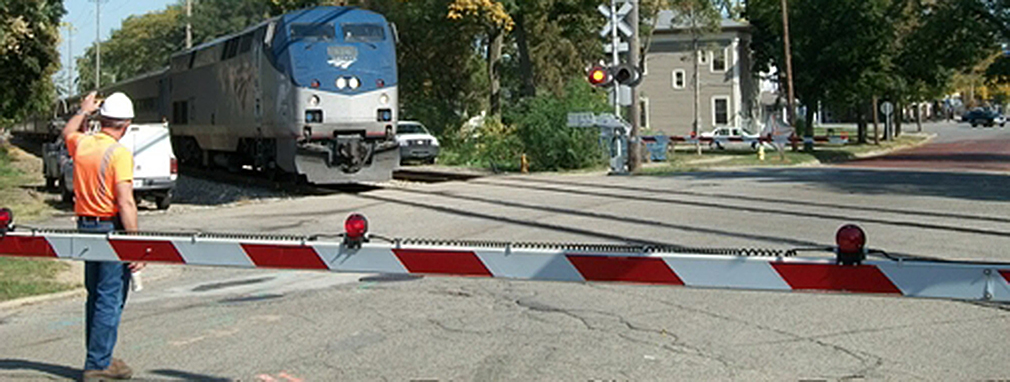Simulated Track Load ("Dummy" Track Load) - In Stock; Ships in 24 hrs.
If you're a signal maintainer and you've ever had trouble trying to determine if a false activation problem is in the track or with the motion sensor or grade crossing predictor, you've had a need for a simulated track load, or as some call it, a "dummy" track load.

The Genesis Simulated Track Load enables you to determine without question if the problem is with the track or with the MS or GCP. How? Well, the Dummy Track Load is a “known” good track circuit that is substituted for the “real” track circuit that is in question.
How does it work? The rails and the shunts, whether hard-wired or narrow-band, make up an electrical circuit with resistance, capacitance, and inductance properties. The dummy track-load simply emulates a real-world track circuit for the GCP/HXP or MS/MD (predictor or motion sensor) to “see” as its track circuit. The dummy track load may have somewhat different characteristics than your track circuit, but it’s in the ballpark and should allow you to adjust the GCP/HXP or MS/MD such to keep the XR relay up.
But before you substitute the Dummy Track Load in the place of the real track circuit, there’s one thing you absolutely must remember:
Once you wire in the Dummy Track Load, the crossing equipment will NOT detect an approaching train!
In other words, while the Dummy Track Load is being used as a track circuit, you must take whatever precautions your railroad’s operating rules require to protect the crossing. And I know you don’t think you need reminded of such obvious matters of safety, but we all occasionally have our attention diverted just enough to forget something that is crucially important. And, don’t forget to remove the track load and restore the crossing back to normal operation before you leave.
Check and double-check. Test and re-test. You’ll never regret those few extra minutes taken to make certain everything’s in good order.
Our standard Dummy Track Load simulates 1000 ft. approaches with good (actually perfect) ballast conditions and hardwire shunts. This means if you’re operating a predictor or motion sensor at one of the higher frequencies, say above 750Hz, the unit may not calibrate or adjust quite like you might expect, since the higher frequencies work better with approaches that are shorter than 1000 ft.
Not to worry, though. If you can get the unit to pick up the XR relay, then you’ve established that the electronics are OK, and it’s time to go out and walk the approaches (once more – ugh!) looking for a problem with the track.
Instructions for connecting the 98040 Dummy Track Load (Adobe pdf format)
t-DL1000 / t-DL2000 Spec Sheet (Adobe pdf format)
O R D E R I N G I N F O R M A T I O N
To order the 1000' Approach Dummy Track Load, specify: t-DL1000, p/n 98040-1000.
To order the 2000' Approach Dummy Track Load, specify: t-DL2000, p/n 98040-2000.
All versions in Stock; Ships in 24 hrs.











